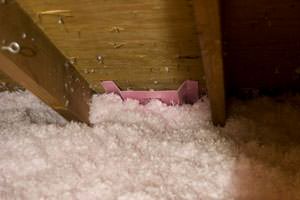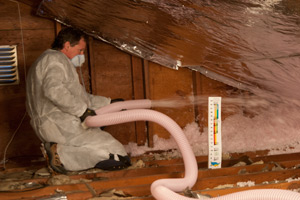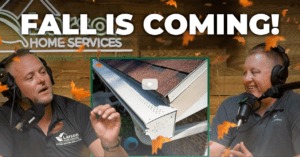 Wisconsin homeowners know better than most that living in a region that experiences the totality of all four seasons can absolutely wreak havoc on your energy bill during certain points of the year. That’s why choosing the right type of attic insulation for your home can be the difference between having enough money saved for summer vacation versus losing your savings to your winter energy bills. Adding any insulation to your home is sure to enhance the energy efficiency of your residence but each type comes with its own unique advantages.
Wisconsin homeowners know better than most that living in a region that experiences the totality of all four seasons can absolutely wreak havoc on your energy bill during certain points of the year. That’s why choosing the right type of attic insulation for your home can be the difference between having enough money saved for summer vacation versus losing your savings to your winter energy bills. Adding any insulation to your home is sure to enhance the energy efficiency of your residence but each type comes with its own unique advantages.
Spray Foam Insulation
Spray foam insulation is a common insulation option that is a surefire way to cut the cost of heating and cooling your home throughout the year. However, most homeowners don’t realize that there are actually different types of spray foam insulation to select from.
Open-Cell Foam
Open-cell foam is made up of tiny bubbles that are interconnected. These bubbles will hold in the air to provide an insulation value between R-3.5 and R-4. Open-cell foam has a spongier feel than a closed-cell which will absorb moisture similar to a sponge. Since the insulation will lose R-value when wet, it’s not advisable to use open-cell spray foam in damp environments such as basements and crawl spaces. However, it can be sprayed between rafters and studs.
Closed-Cell Foam
Similar to open-cell foam, once sprayed closed-cell foam will immediately begin to fill gaps and cracks as soon as it’s applied. However, it’s typically more expensive to have installed because it maintains a higher R-value of between R-6 and R-7.1 per in. This is because it’s able to form a more effective moisture barrier than the open-cell foam.
Blown-In Cellulose Insulation
Cellulose insulation is sprayed or blown into walls, conforming to cavities to create a tight thermal barrier that provides superior comfort and cost savings. The benefits of cellulose insulation are seemingly endless as it will reduce your heating and cooling bills by as much as 32 percent and will meet and exceed fire-resistance testing. In addition, cellulose insulation can be installed over existing insulation to save time on the installation.
Blown-In Fiberglass Insulation
Similar to cellulose insulation, fiberglass insulation is blown into your home for an installation that can be completed in as little as one day. Fiberglass insulation is one of the most affordable ways to improve energy efficiency and in most cases it can be installed directly over existing attic insulation that is underperforming.
Rigid Foam Insulation
Unlike blown-in and spray foam insulation, rigid foam insulation will never lose insulating value by settling or compressing. In fact, foam board will even shed water instead of soaking it up like cellulose and fiberglass insulation do. This will ensure that you’ll never have to worry about mold or moisture damage caused by your insulation.
While there are many options for homeowners in Wisconsin that are looking for insulation for their home, it’s important to remember that any choice you make is going to result in cost savings during the long winter months. For more information about common types of insulation offered to local homeowners, contact Keeney Home Services today.





